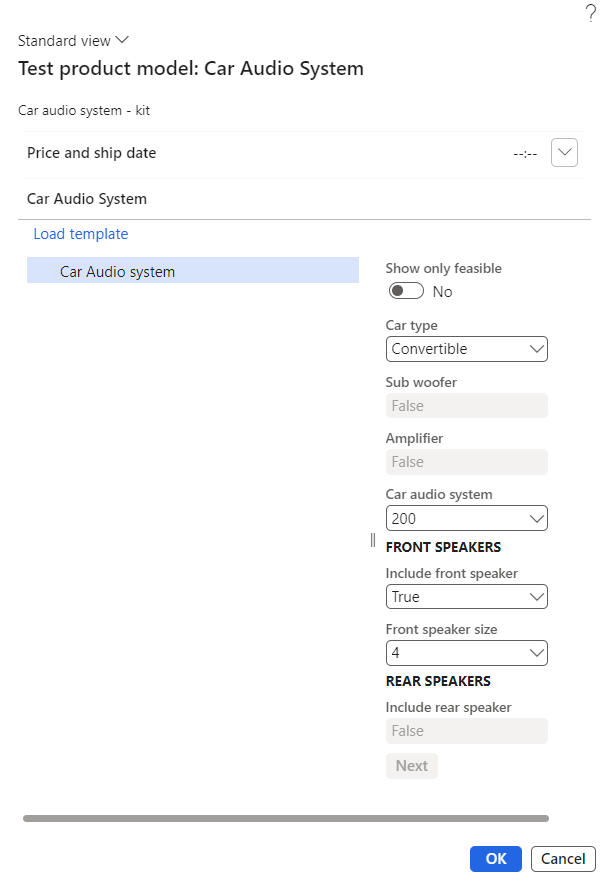Validate and test a product configuration model
After you add information to the product configuration model, it's time to check that the information is correct and that it displays in a logical format. When making corrections, you can change information in the product configuration model after validating and testing. You can perform the validation and testing of the product configuration model repeatedly as you correct errors and refine information in the product configuration model.
Validation of a product configuration model can occur on several levels in the model; therefore, it can cover various scopes. The lowest level is for a single expression constraint. In this case, the product designer typically performs validation to verify that the syntax of an expression is correct.
Similarly, you can validate a condition for a BOM line or a route operation in isolation.
You can also complete validation for a user-defined table constraint definition. In this case, you can verify that the values that people enter for each field are inside the domain of the corresponding attribute types.
Finally, you can perform validation for a complete product configuration model to verify that the complete syntax is correct and that all naming and modeling conventions have been respected.
Validation checks that the constraints for the product configuration model are valid. If the syntax for any constraint is incorrect, the system displays an Infolog message. You can continue to work with the product configuration model; however, you won't have a passing validation or can't test it.
We recommend that you validate the product configuration model before testing it. If you test the product configuration model first, and errors are present, the system displays a generic Infolog message that can't help you resolve the error.
Testing
Testing displays the Configure line form where you can visually inspect the configuration experience and select the values for all defined attributes. The purpose of testing is for the product designer to verify that the complete configuration experience is in order, such as attribute values, constraints, default values, mandatory and hidden attributes, and so on. You can review to ensure that the attribute groups that you created display attributes for the components and subcomponents in the way that you intended.
Testing a model is similar to running an actual configuration session. You can go through the configuration pages and verify that the model structure supports the configuration process. Then, you can verify that the attribute values are correct and that the attribute descriptions guide you in selecting the correct values. Finally, after a test session completes, the system tries to create the BOM and the route that corresponds to the selected attribute values, and then it presents an error message if anything goes wrong.
Configuration pages
To navigate between components, select Next in Product information management > Products > Product configuration models > Model > Test, or select a component in the product configuration model tree to set focus on it.
